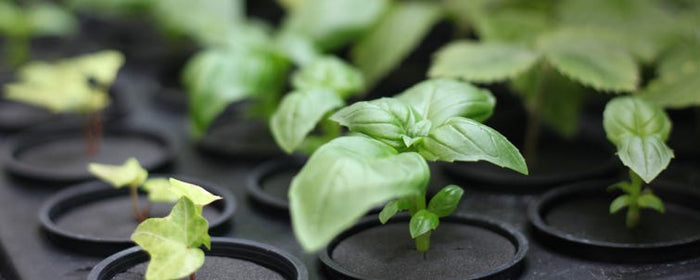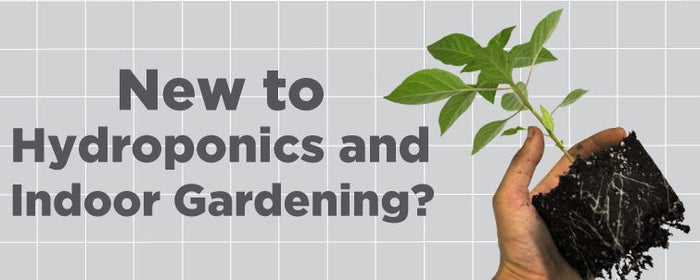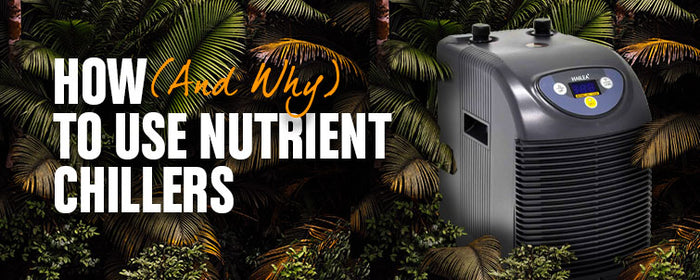
Soil Vs. Coco Vs. Hydro…Which Is Best?
Trying to pick a growing method? There are three to choose from - soil, coco and hydro. Here are the basics of each one.
Growing in Coco
aka. coir

Coco is has no nutritional content, so gives you lots of control. However you still have media to insulate roots, making it more forgiving than hydro.
Great For
- Beginners and intermediate growers
Pros
-
Light & airy for good root growth
-
Inert - no nutritional content (more control)
-
Easy to use
-
Can be hand-watered or used with drip systems
Coco - like Plagron Cocos - is your half-way house.
The light, airy nature of coco promotes root growth.
Overall, you get bigger and faster growing plants than you do in soil. But there’s a bit more room to make mistakes.
Like in soil, roots are insulated to offset temperature changes.
Unlike in soil, coco has very little nutritional content. You have complete control over what goes into your plants – get it right and growth is amazing! You will need to monitor your nutrient pH though.
If you want better results than you get in soil but aren’t ready to move onto hydro yet, this is the media for you.
Tips:
Coco tends to absorb calcium and nitrogen while releasing potassium. Use a good CalMag to counter this. The Calmag will balance the nutrient solution to a point where your plants are able to absorb what they need. Without adding it, you could find yourself in a "lockout" situation, where the plant is unable to take in vital elements.
Something else to remember is that coco holds onto nutrients, making some less available to plants. To make sure plants get enough to feed on, start feeding with nutrients from day 1 and only use just water every 1-2 weeks.
Growing in Soil
Soil/compost

Soil is the only media to contain beneficial microbes so is the best one for organic growers and beginners.
Great For
-
Beginners
-
Organic growers
Pros
-
Easiest method
-
Buffers pH
-
Contains beneficial microbes
-
Retains nutrients well
-
Can be hand-watered or used with drip systems
Soil’s a very forgiving media – it already contains nutrients and beneficial microbes to help maintain plant health and ward off diseases.
Since roots are insulated by the soil, air temperature variation has less of an impact on the root zone.
You don’t even have to adjust the pH of your nutrient solution. Why? Soil microbes and organic matter have the ability to modify the pH range to allow for nutrient uptake.
However, if you regularly apply a nutrient solution with a pH of below 5 or above 8, you will benefit from adjusting the pH to between 5.5 and 6.5. Just don’t overdo it. If you are going to adjust pH in soil, we recommend using Biobizz pH Up and Biobizz pH Down. This is because they are organic and less damaging than hydroponic pH adjusters to the beneficial organisms present in your soil.
If you’re growing organically, this is the method for you. Most organic nutrients work with the beneficial microbes already in your soil – like Ecothrive Charge & Biosys.
Tip:
If growing with soil, consider using Ecothrive Coco with Charge. It's coco mixed with Charge at the ideal 1%.
Growing in Hydro
Little or no media (exposed roots)
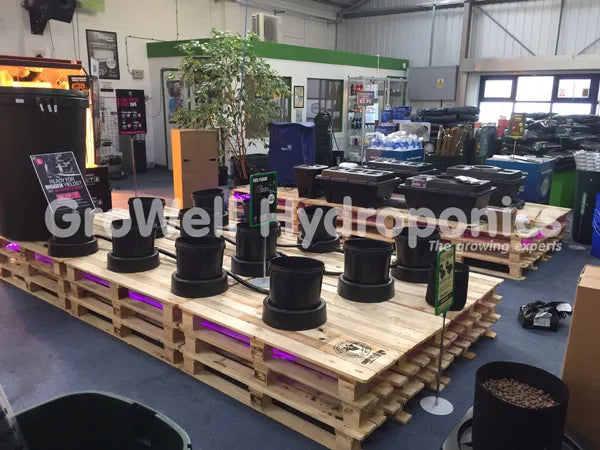
To get the biggest, fastest growing plants, go hydro. Exposed roots grow straight into your nutrient solution.
Great For:
-
Optimum control
-
Serious growers
Pros:
-
Fastest rooting & growth
-
Bigger plants
-
Bigger yields
There’s very little media to get in the way of root growth. This means you get a denser root network with more root tips to absorb nutrient. To further enhance uptake, roots have instant and unlimited access to nutrients and water.
It’s a little harder to grow in hydro – with very little media to protect roots, you really need to watch your temperature and oxygen levels.There are lots of tools to help you stay inside the safe zone. A Hailea Nutrient Chiller in summer will be your best friend. In winter, you'll want a Hydor Nutrient Heater.
Don’t even try this method if you’re an organic grower – organic nutrients contain biologically active ingredients don't play nice. Nutrients will ferment and foam in hydro systems, causing blockages and other problems. Stick with a good mineral nutrient in hydro.
Tip:
To keep your hydro system disease free, use Silver Bullet Roots.It prevents 99.99% of all root diseases (bacteria, fungus, mould & biofilm). It won't harm your plants - it's non-toxic, non-corrosive and odourless.
It doesn't hurt to clean your system with Silver Bullet Mist between crops either - the last thing you want is cross contamination!
